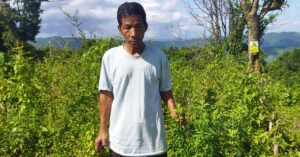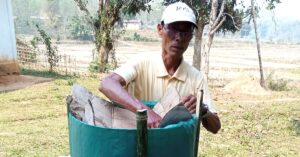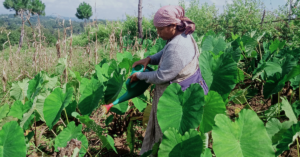Two energetic women, from Khapmaw community, with a progressive mindset and indomitable spirit were the first two among their Agroecology Learning Circle (ALC) group to experiment on making natural biopesticides on their own. Khapmaw Community is one of the 100 partner villages of NESFAS in the ongoing project “Empowering Indigenous Communities through Agroecology Learning Circles (ALCs) for resilient, integrated and innovative natural resource management”, which is supported by Meghalaya Basin Management Agency (MBMA) and funded by the World Bank.
Kong Thriep Umsong and Kong Philaiaineh Umsong, the two ALC members of Khapmaw, received rigorous training from community facilitator of the area Kong Ambious Umsong on how to make their own natural bio pesticides. Kong Ambious, on the other hand, was trained by the NESFAS team on how to promote chemical free farming in the area. They also shared various experiments and ways on how to avoid using chemicals on their produce and instead make their own pesticides using natural ingredients which are easily available around. After learning about the many different methods of coming up with the bio pesticides, Umsong shared her valuable learning with the other ALC members in her community so that they can implement the same in the field.
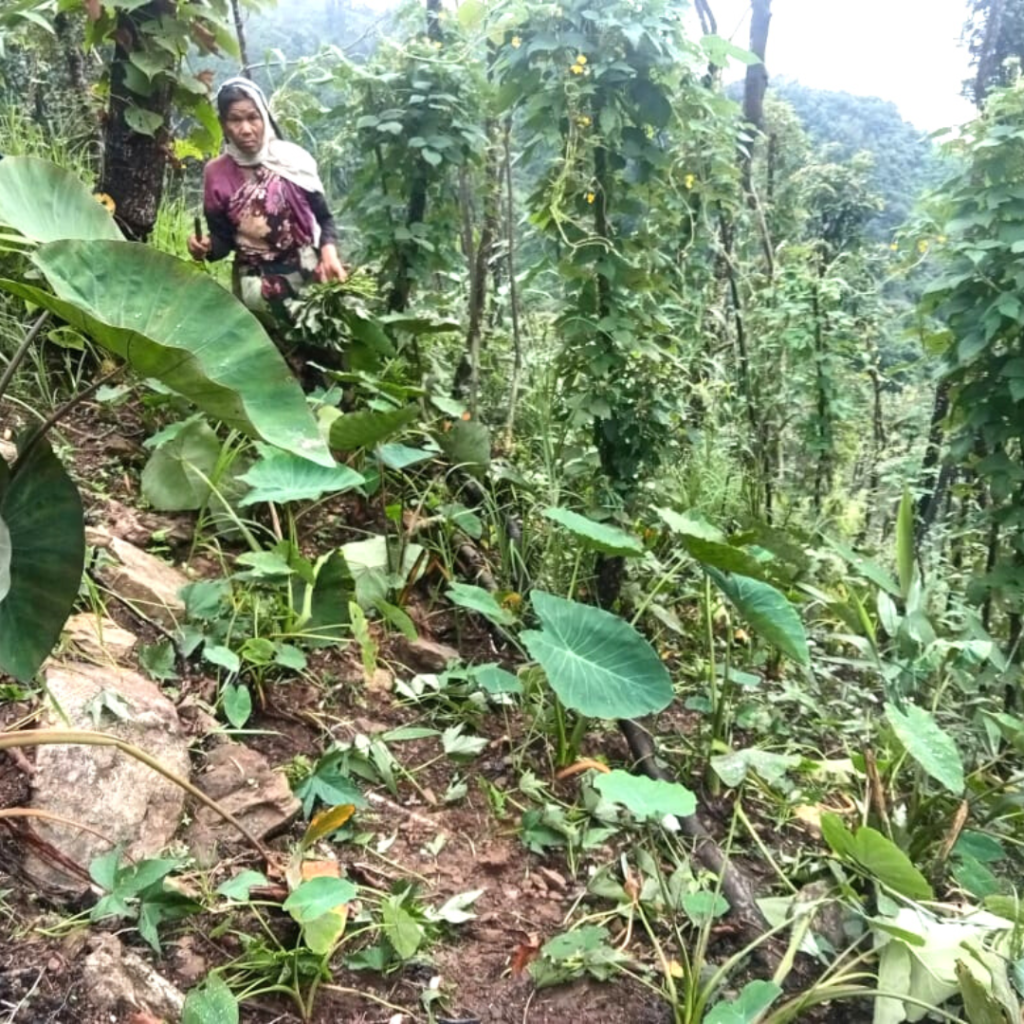
Kong Thriep Umsong, one of the farmers who received this valuable information from Kong Ambious, said, “With this knowledge that I have gathered from our CF, I would like to take this opportunity to encourage and urge my fellow farmers and ALC members to start practicing this kind of natural methods. Not only is it a quick and easy technique to get rid of the pests and insects which destroys our crops but rather, it helps them grow naturally which is not only healthy but provides a lot of nutrition to our body.” She added, “Using of chemical pesticides, on the other hand, damages the crops and soil health and unknowingly does some amount of damage to our health as well.”
The two women cited that the methods that they used to create this natural pesticide was by using garlic, chillies, soap and tobacco leaves, all of which are available in abundance. They then mix them and ground them together until it becomes a watery paste. They mix the component together with some water and spray the mixture on the infected crop. “We were also told that chilli is also known as one of the main ingredients to reduce pests in crops!” one of them explained.
“I have prepared my own bio pesticide by using garlic this time and I have also used chilli as the main ingredient to reduce pest infestation in Taro,” Kong Thriep said. The changes have been spectacular, she added, and pest infestation has been reduced drastically after she used the natural pesticide on her crops.
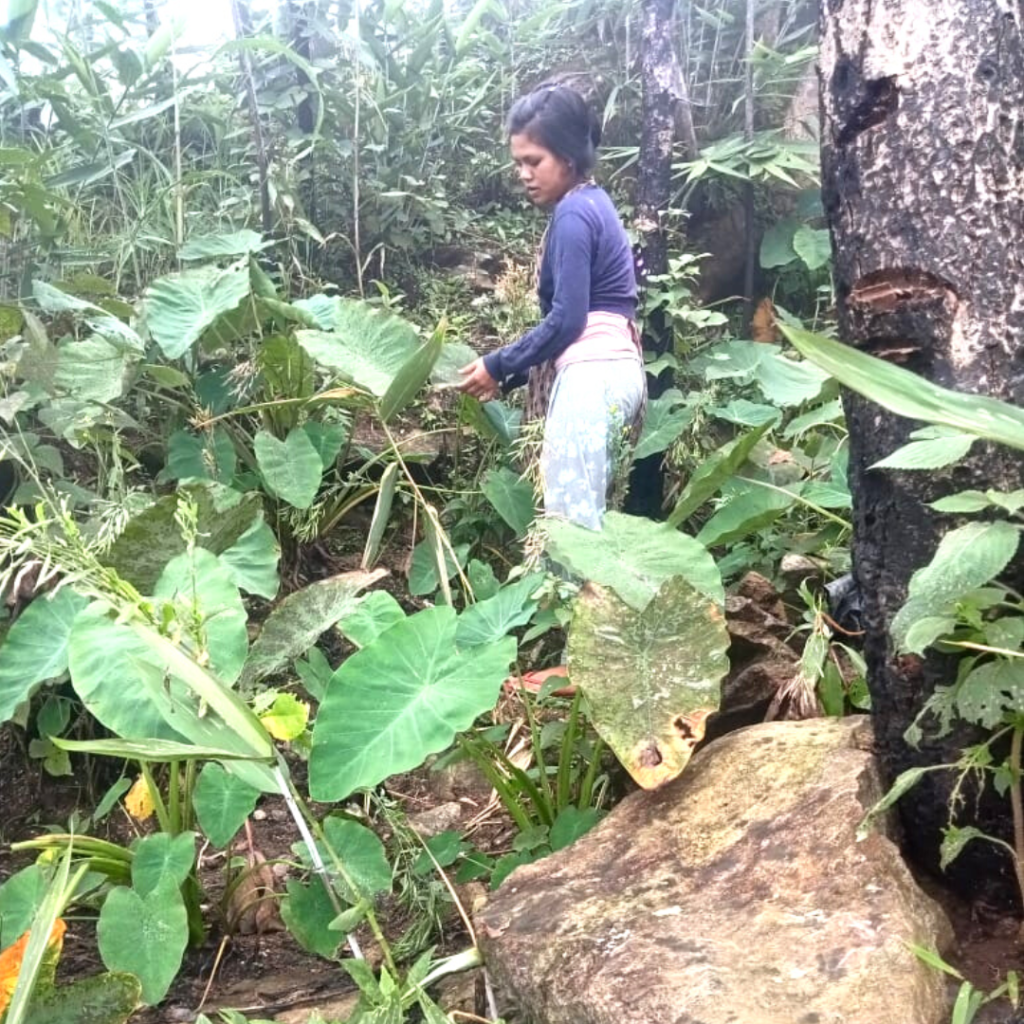
Another farmer, while speaking with the NESFAS team, said that they recently realised that these kind of experiments have benefitted many farmers in the community. They also said that it has resulted in large success and has helped reduce corm borer pests that would otherwise feed on the Taro crop which were always affected from time to time.
The purpose of these experiments were to help the farmers to protect and safeguard their crop from getting infected by pests through the use of traditional ways and methods. In the project, it is part of the participatory-led-experiment, which is being practised by all ALC members to find ways and validate traditional methods, etc. It is also one of the ways to help preserve the old traditional learnings so that the future generations can always put them into use at any time they require.
Kong Philaiaineh Umsong said, “We want to take this opportunity to urge other fellow ALC members to follow these traditional knowledge practices which helps kill pests and also have no effect on their crops at the same time. Other than killing the pests and unwanted insects which feed on the crops, these natural pesticides also help in increasing the production growth of our plants in the natural way.”

